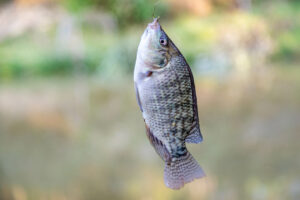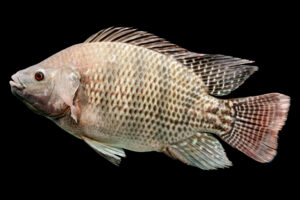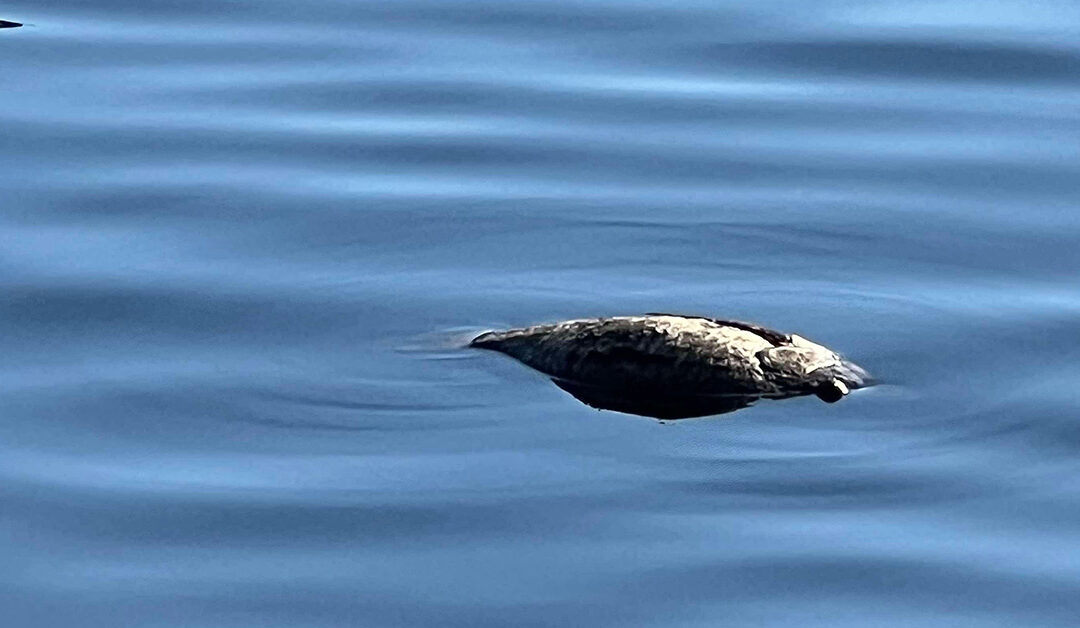
Deceased Tilapia in the Ortega River
St. Johns RIVERKEEPER (SJRK) is monitoring the Florida Fish and Wildlife Conservation Commission (FWC)’s investigation of several fish kills in the St. Johns River. FWC states that the fish kills of predominantly tilapia (an invasive species) are most likely linked with the extreme cold a few weeks ago. Investigation is also underway of the larger fish kill at Lake Apopka that involves many fish species, including native species, at a higher volume.
Fish kill reports from the public are vital in responding to events like this. We ask you to report dead fish that you are seeing along with pictures, GPS coordinates, number of fish and what species to us at report@sjrk.org and to FWC’s Fish Kill Hotline (1-800-636-0511).
Invasive Fish in the St. Johns
Non-native fish species are significantly altering the native ecosystems of the St. Johns River, with Mozambique tilapia (Oreochromis mossambicus) and African blue tilapia (Oreochromis aureus) being among the most impactful.
The damage caused by these invasive species ranges from the decline of native competitors to the complete collapse of aquatic communities. Tilapia compete with native species for food and nesting areas, ultimately disrupting the aquatic habitat.
Additionally, tilapia disturb natural aquatic vegetation, such as eelgrass, further degrading the ecosystem. Without natural predators in their introduced environment, their populations grow unchecked, outcompeting native species for essential resources like food and space. As a result, species that cause such ecological harm are classified as invasive.
Why am I seeing dead Tilapia in the river?
Tilapia have thrived in Florida’s waters for over a decade, with their ability to reproduce in both fresh and brackish environments contributing to their rapid population growth.
Their adaptability is further enhanced by their preference for water temperatures between 60- and 80-degrees Fahrenheit, allowing them to establish themselves in a wide range of habitats.
However, the extreme cold experienced several weeks ago led to a significant die-off, as many tilapia were unable to survive the sudden drop in temperature due to their intolerance of cold water temperatures.
How do I know what I am seeing is in fact Tilapia?
Young blue tilapia are nondescript gray with a distinctive black spot at the rear of the dorsal fin, while adults typically exhibit a blue-gray coloration that fades to white on the belly. Their dorsal and caudal fins are edged with red or pink, and they have a broken lateral line, with the spiny dorsal fin seamlessly connected to the soft dorsal fin. In Central Florida, anglers can generally assume that any tilapia observed in freshwater is a blue tilapia, and those exceeding three pounds are also likely to be of this species.
Similarly, Mozambique tilapia are laterally compressed, and have a deep body with long dorsal fins, the front part of which have spines. Native coloration is a dull greenish or yellowish, and weak banding may be seen. Adults reach up to 15 inches in standard length and up to 2.4 lbs.

Blue Tilapia

Mozambique Tilapia
Learn more about non-native aquatic species from the University of North Florida.
What if I am seeing other types of dead fish including native species like large-mouth bass, shad, blue gill, etc.?
If you are seeing multiple types of dead fish, take as many photos as you can and report as soon as you can with GPS coordinates, number of fish and what species to us at report@sjrk.org and to FWC’s Fish Kill Hotline (1-800-636-0511). The massive fish kill in Lake Apopka is currently under investigation to determine what killed both native and invasive fish species. While the cold snap could have been a factor, native fish are normally more resilient to temperature fluctuations raising our concern that something more sinister is at the root cause of the recent Lake Apopka fish kill. The St. Johns River Water Management District reported at their February 11 Board Meeting that they have ruled out low dissolved oxygen and have not detected harmful algal outbreaks in the area.
